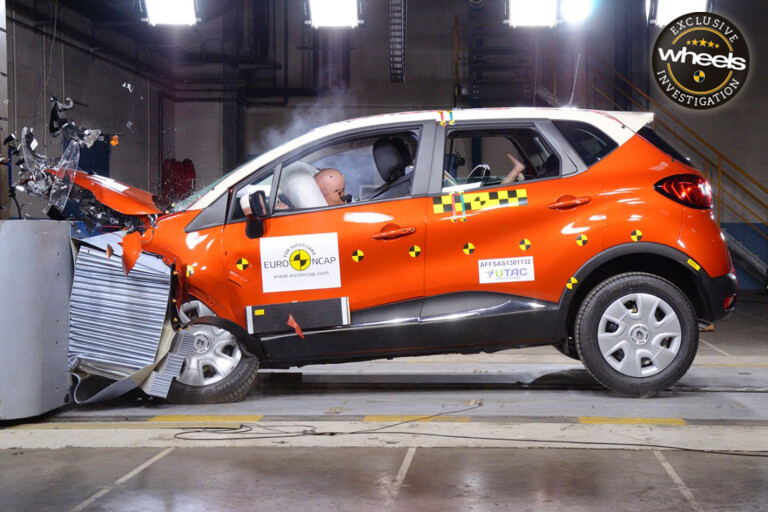
MORE than half the 179 cars currently on sale and rated as having a perfect five-star safety score by the Australasian New Car Assessment Program (ANCAP) would not maintain that rating if evaluated today, an exclusive Wheels investigation has revealed.
Yet, far from being death traps, many of the modern breed of what would now be four-star cars miss out on one or two features required for a 2015 five-star rating, some of which have little or no bearing on occupant protection or vehicle safety.
Confusion and inconsistencies surrounding the government-funded independent safety ratings have come about because of changes to the ANCAP rating system and the implementation of a “transition period” as ANCAP adopts the European ratings that once had lower standards to the local equivalent.
However, in most cases carmakers are not required to publish the year a car was tested when advertising an ANCAP five-star rating, and it is almost impossible for consumers to determine the differences between changing standards.
ANCAP admits not everything is “water-tight” in the transition period, but defends the latest results, which in some cases would have buyers warned off cars because they receive a four-star rating – yet they arguably have higher safety standards than competitors with older five-star ratings.
ANCAP points to ‘datestamping’, whereby cars tested years ago stipulate the date they were crash-tested.
With new vehicles sometimes going unchanged for a decade or longer – something of which most consumers are unaware – the ANCAP five-star ratings in some cases improperly reward older models that only had to meet the requirements when first tested.
One of the most controversial changes to the ANCAP testing criteria is the requirement for five safety assist technologies (SATs). Car companies can choose from about 40, some of which appear to have little bearing on vehicle safety, such as rear-seatbelt reminders and a hill-hold assist function, which works like an automatic handbrake.
The confusion and inconsistencies come as many industry experts question the need for a local safety authority ahead of the planned 2017 shutdown of Australian car manufacturing.
One of the founders of ANCAP in the early 1990s, Michael Griffiths, is critical of the direction the crash-test authority has taken in recent years.
Now a respected road safety consultant, Griffiths said the taxpayer-funded organisation had lost its innovative approach and was lagging other international crash-testing authorities.
“It's a shame that a program that was world leading is now world lagging,” Griffiths told Wheels, pointing to the American Insurance Institute of Highway Safety as a leader in the field of occupant protection.
“ANCAP should be taking the same innovative route as IIHS rather than being tied to a program that has the limitation of a committee needing to represent all of Europe’s interests.”
Read Wheels' exclusive investigation in the June 2015 issue, on sale at newsagents Thursday (May 21).

COMMENTS